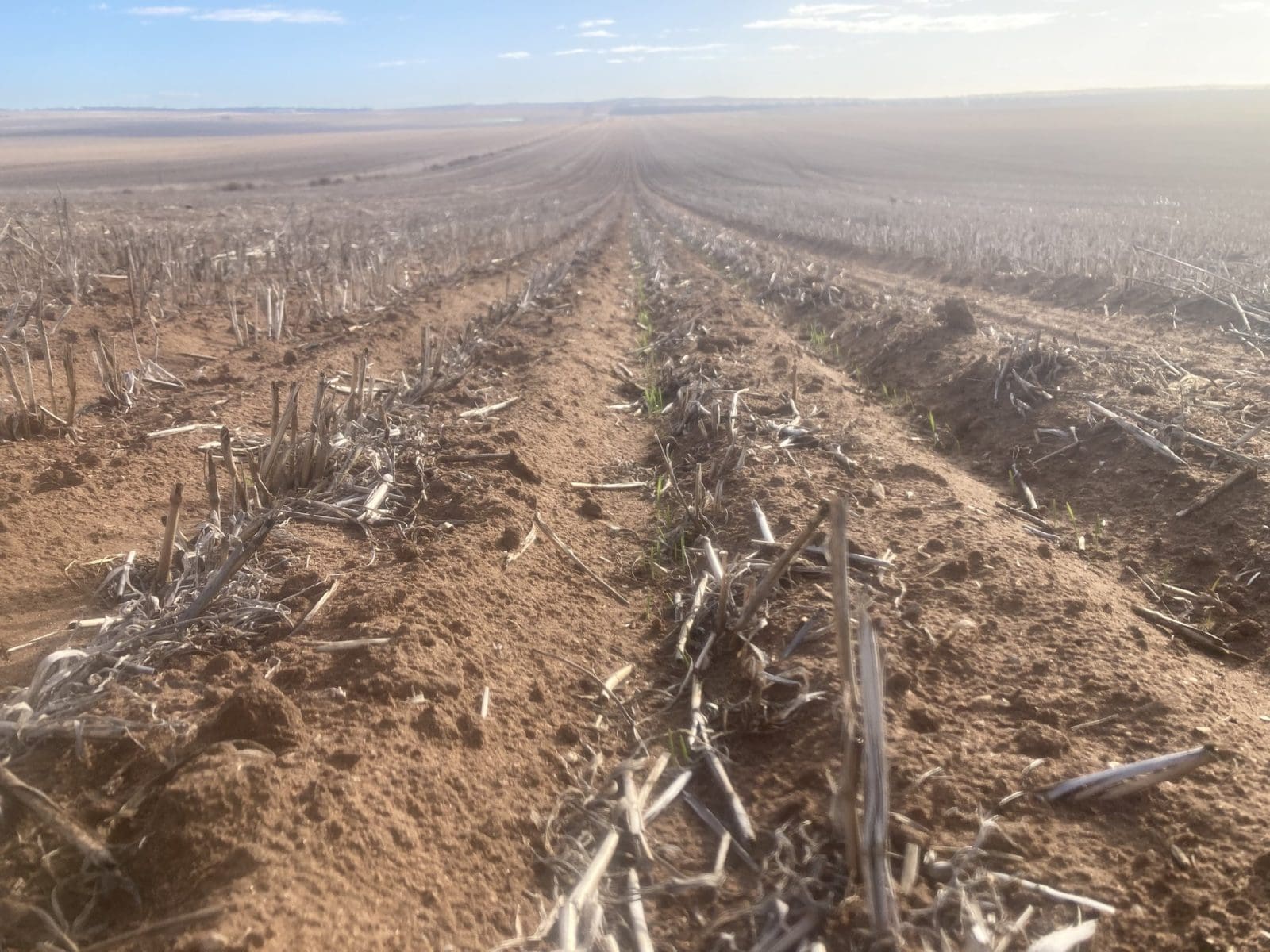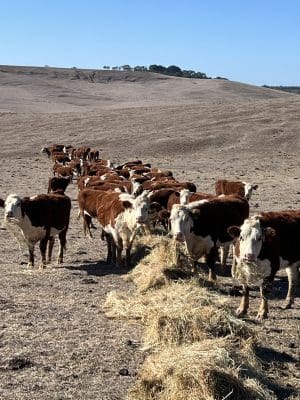
Wheat seedlings emerge at Brinkley, south of Murray Bridge in SA. Photo: James Stacey
AS THE CLEAN-UP starts after last week’s deluge on the Mid North Coast of New South Wales, south-western parts of the state remain in desperate need of rain to get their winter crops up and away.
Conditions are even drier in Victoria’s two main cropping regions, the Mallee and Wimmera, and its key grazing and dairying areas, Gippsland and the Western District.
Throughout much of southern South Australia extending into its typically high-rainfall grazing areas, the South East, drought conditions are also fierce as southern Australia clicks into the final three weeks of its ideal planting window.
Conditions for croppng country remain good to excellent in Queensland and the northern half of NSW, and in the southern half, some farms clocked ideal amounts to sprout dry-sown crops, or revitalise germinated crops that were close to failing.
In southern and central NSW, rainfall registrations for the week to 9am today include: Ardlethan, Cootamundra, and Grenfell 32mm; Barellan 29mm; Manildra 41mm; Parkes 22mm; Temora 37mm; Trangie 16mm; West Wyalong 28mm, and Young 48mm.
However, some Bureau of Meteorology gauges through the central and south-west slopes and plains and Riverina of NSW missed the rain, and growers are now turning their attention to the next system appearing on the eight-day forecast, and pencilled in to deliver 10-25mm of rain to areas in need.
In Vic, many growers are on track to finish dry seeding ahead of forecast rain, and can expect average or better yields provided the season is kind and brings regular rain.
Windy, dry weather halts SA seeding
In South Australia, strong to destructive winds have halted sowing of winter cereals and lentils into bone dry moisture profiles.
However, forecasts for coming days point to showers, and isolated patches of the SA grainbelt have jagged just enough rain to germinate crops.
Meningie-based Platinum Ag senior agronomist Matt Howell said sourcing hay was the major concern for producers in his region.
“They’re about 75-percent done with dry seeding, and livestock feed is the concern; there’s none left,” Mr Howell said.
“Hay is very hard to find now, and numbers are being sold right back.”
Mr Howell estimates sheep and cattle producers are down to 60-70pc of their core breeder numbers, and will be selling more as fodder gets harder to find for stock in containment pens amid the dusty paddocks.
“There’s nothing domestic left in SA, and western Vic we’ve just about skun for hay; now we’re in NSW competing with what they need after the flood.”

Cattle at Hamilton in Victoria’s Western District are being fed hay stored on farm. They would normally be on pasture at this time of year. Photo: Jamie Pepper
Mr Howell said cereal hay landed in SA’s South East normally sold for around $250 per tonne, but is now trading at $580-$600/t to reflect heady competition for hay in NSW.
He chimed in on widespread criticism of the SA Government for not providing cost and/or freight subsidies to help secure commercially available hay needed to bolster dwindling on-farm supplies.
“The NSW Government is a whole lot more proactive than SA’s.”
Mr Howell said graziers and mixed farmers were “chasing anything”, including almond hulls and rejected potatoes, to feed stock.
While pellets are a preferred feed option, Mr Howell said spot orders come with waits of 6-8 weeks as manufacturers stretch themselves to keep up with demand.
“People are doing whatever they can to reduce their feed demand; everyone’s madly selling dry ewes or preg testing, and blokes are working hard to keep their stock in saleable condition.”
Mr Howell said the Upper South East needed rain by the first week of June to kick-start a winter crop, even just for grazing.
WA waits for fill-in rain
Western Australia is waiting on rain for the northern third of its cropping region to get cereals, lupins, and some canola up and away.
While dry patches have developed in all regions bar the high-rainfall Great Southern, agronomist and SLR Agriculture chief executive officer Michael Lamond said 10-25mm of rain on the eight-day forecast should put crops back on track.
“The Esperance port zone is OK; its crop is up, but they haven’t had rain for three weeks,” Mr Lamond said.
“The south coast is OK, Albany west is OK, and the Lakes district has some areas that are good.
“Eastern areas have crop that’s in and up, but when you move north, there’s virtually no crop up at all.”
He said the Geraldton Zone, and much of the Kwinana North Zone, needed rain to get the crop going in the next three weeks.
“There’s still probably a third of the state that has had no rain, but there’s still a fair bit of crop going in.”
While WA is the powerhouse of Australian grain production and exports, Mr Lamond does not believe big reserves are available to send east for drought feed, in part because of biosecurity restrictions tied to hay and lupins.
“You can’t get hay across the border, but lupins you can, once you clear a few hurdles.”
They relate to necessary assurances that WA lupins will not carry anthracnose into disease-free areas of eastern Australia.
“There are not a lot of reserves here; lupin production wasn’t huge last year, and we have an export market of 350,000t, which doesn’t leave a lot left.”
He said the rule-of-thumb transport cost of $200/t for grain also made it difficult for WA product to calculate into SA.
Grain Central: Get our free news straight to your inbox – Click here

HAVE YOUR SAY